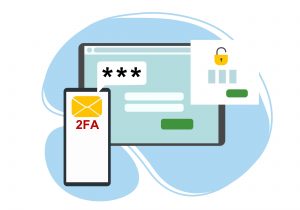Website Security Best Practices for 2024
Everyone is always connected and on some sort of website, so website security has become a critical concern for businesses and individuals alike. With cyber threats evolving at an alarming rate, protecting your online presence is no longer optional—it’s essential.
From data breaches to malware infections, the risks to your website and sensitive information are numerous and can have severe consequences for your reputation and bottom line.
This guide will walk you through the website security best practices for 2024, equipping you with the knowledge to safeguard your digital assets. You’ll learn about common threats like SQL injection and cross-site scripting, as well as essential security measures such as HTTPS implementation and strong password management.
We’ll also cover advanced strategies, including multi-factor authentication, web application firewalls, and regular security audits, to help you stay one step ahead of cybercriminals and ensure your website remains secure in an ever-changing digital world. And if you still need help, we advise you to read about how to choose a good web development company or contact us directly.

Understanding Common Website Security Threats
To safeguard your website effectively, you need to understand the common threats it faces. Let’s explore some of the most prevalent and dangerous security risks in the digital landscape.
Cross-Site Scripting (XSS)
Cross-Site Scripting (XSS) attacks are a type of injection where malicious scripts are inserted into trusted websites. These attacks occur when a web application uses unvalidated or unencoded user input within the output it generates. The attacker exploits this vulnerability to send malicious code, typically in the form of a browser-side script, to unsuspecting users.
XSS attacks can be categorized into two main types:
- Reflected attacks: The injected script is reflected off the web server, such as in error messages or search results.
- Stored attacks: The malicious script is permanently stored on the target servers, like in databases or message forums.
The consequences of XSS attacks can range from minor annoyances to complete account compromise. In severe cases, attackers can hijack user sessions by accessing cookies and session tokens.
SQL Injection
SQL injection is a critical vulnerability that arises when websites fail to adequately screen, filter, or control queries from the website. This allows attackers to inject fragments of SQL code into database queries, potentially extracting sensitive information.
To prevent SQL injection attacks, you should implement the following measures:
- Filter database inputs to detect and remove malicious code.
- Restrict database code and access to prevent unauthorized queries and data manipulation.
- Keep your applications and databases fully patched and updated.
- Monitor application and database inputs to detect and block malicious attempts.
DDoS Attacks
Distributed Denial of Service (DDoS) attacks aim to disrupt websites and online services by overwhelming them with more traffic than they can handle. These attacks are similar to car gridlocks that prevent drivers from reaching their destination.
In 2023, there was a significant increase in DDoS attacks:
- The total number of DDoS attacks worldwide increased by 63% compared to 2022.
- Multi-vector attacks saw a 108% jump.
- The biggest attack peaked at 1.4 terabits per second, equivalent to a small country’s entire daily internet traffic.
Malware and Ransomware
Malware continues to be a formidable threat to cybersecurity landscapes worldwide. In 2024, we’re witnessing an evolution in the complexity and stealth of malware attacks, making them more challenging to detect and mitigate.
Ransomware, a particularly dangerous form of malware, has seen a significant increase in activity. According to the World Economic Forum, “Ransomware activity alone was up 50% year-on-year during the first half of 2024″. The emergence of Ransomware as a Service (RaaS) has made it easier for criminals, regardless of their technical expertise, to launch ransomware attacks.
To protect your website from these threats, it’s crucial to implement robust security measures, regularly update your systems, and educate your team about potential risks and best practices.
Essential Security Measures for 2024
To safeguard your website effectively in 2024, you need to implement robust security measures, apart from just futureproofing your website. Let’s explore some essential strategies to protect your digital assets.

Implementing SSL/TLS Encryption
SSL/TLS encryption is crucial for securing data transmission between your website and its visitors. By implementing HTTPS, you ensure that all information exchanged remains confidential and unaltered through the SSL/TLS protocols. To set up SSL/TLS:
- Choose a reputable Certificate Authority (CA) like DigiCert or Let’s Encrypt.
- Select an appropriate certificate type (DV, OV, or EV) based on your needs.
- Install the certificate on your server and configure it to use HTTPS.
- Redirect all HTTP traffic to HTTPS to ensure secure connections.
Using Web Application Firewalls (WAF)
A Web Application Firewall (WAF) is a powerful tool that filters and monitors HTTP traffic to protect your web applications. WAFs offer several benefits:
- Real-time traffic monitoring and filtering
- Protection against common attacks like SQL injection and cross-site scripting (XSS)
- Improved application performance by managing workloads
- Compliance with regulations like HIPAA and PCI
To implement a WAF effectively, consider cloud-based solutions for cost-effectiveness and ease of installation.
Regular Security Audits and Penetration Testing
Conducting regular security audits and penetration testing is essential to identify vulnerabilities in your IT infrastructure. These practices offer several advantages:
- Proactive identification of security gaps
- Compliance with industry regulations
- Protection of customer data
- Cost savings by preventing potential breaches
According to the World Economic Forum, ransomware activity alone increased by 50% year-on-year during the first half of 2024. This underscores the importance of regular security assessments to stay ahead of evolving threats.
By implementing these essential security measures, you can significantly enhance your website’s protection against cyber threats in 2024.
Advanced Security Strategies

Multi-Factor Authentication (MFA)
In today’s digital landscape, Multi-Factor Authentication (MFA) stands out as one of the most effective ways to protect your software and data. MFA adds an extra layer of security by requiring multiple authentication factors, such as a text message or an email containing a code, to access your software. This approach significantly reduces the risk of unauthorized access and provides reliable protection against phishing attacks.
MFA is particularly effective because it targets the most vulnerable link in your organization’s cybersecurity — your people. It creates a technological barrier against common mistakes, such as reusing old passwords or writing them on sticky notes.
According to the 2024 Verizon Data Breach Investigations Report, 81% of hacking-related breaches used stolen or weak passwords. Implementing a cloud-hosted solution with MFA can prevent 99.9% of password-based attacks on your accounts.
The benefits of MFA include:
- Enhanced security
- Protection against social engineering attacks
- Compliance with regulatory requirements
- User-friendly experience
Recent data shows a significant increase in MFA adoption. In 2023, 79% of institutions required MFA for faculty, staff, and students, compared to just 38% in 2020.
Content Delivery Networks (CDN) for DDoS Protection
Content Delivery Networks (CDNs) not only improve website performance but also enhance security. A properly configured CDN can help protect your website against common malicious attacks, such as Distributed Denial of Service (DDoS) attacks. CDNs improve security by providing DDoS mitigation, enhancing security certificates, and implementing other optimizations.
API Security
As APIs become increasingly crucial for modern web applications, securing them is paramount. Some key API security concerns include:
- Broken Authentication (API2:2023): Incorrect implementation of authentication mechanisms can allow attackers to compromise authentication tokens or exploit flaws to assume other users’ identities.
- Broken Function Level Authorization (API5:2023): Complex access control policies can lead to authorization flaws, potentially granting attackers access to unauthorized resources or administrative functions.
- Security Misconfiguration (API8:2023): APIs often contain complex configurations that, if not properly secured, can open doors to various types of attacks.
- Unsafe Consumption of APIs (API10:2023): Developers may trust data from third-party APIs more than user input, leading to weaker security standards.
By implementing these advanced security strategies, you can significantly enhance your website’s protection against evolving cyber threats in 2024.
Conclusion - Web security in 2024
Website security is a crucial aspect of maintaining a strong online presence in today’s digital world. The implementation of essential measures such as SSL/TLS encryption, Web Application Firewalls, and regular security audits has a significant impact on safeguarding your digital assets against common threats like cross-site scripting and SQL injection.
On top of that, advanced strategies including multi-factor authentication, content delivery networks for DDoS protection, and robust API security play a vital role in strengthening your website’s defenses against evolving cyber threats.
LET'S START A PROJECT
To wrap up, staying ahead of cybercriminals requires a proactive approach to website security. By putting these best practices into action, you can significantly reduce the risk of data breaches, protect your reputation, and ensure the safety of your users’ sensitive information. Remember, website security is an ongoing process that needs constant attention and updates to address new and emerging threats in the ever-changing digital landscape.
FAQs
What are the recommended practices for securing web applications? To enhance the security of web applications, it’s advisable to retire outdated applications, regularly update passwords, conduct log forensics, ensure robust data validation, restrict user privileges, strengthen authentication measures, establish a solid content policy, and secure the file system to protect sensitive data and prevent unauthorized modifications.
What are the cyber security focuses for the year 2024? In 2024, a key priority is the enhancement of secure, resilient open source software. The Joint Cyber Defense Collaborative (JCDC) has launched an initiative to bolster the awareness, security, and cyber resilience of open source software used in Operational Technology and Industrial Control Systems.
What are the new cyber security laws in 2024? The Indian government enacted the Digital Personal Data Protection Act on August 11, 2024. This legislation, inspired by the EU’s General Data Protection Regulation (GDPR), is designed to safeguard personal data, protect the rights of data principals, and regulate the activities of data fiduciaries.
What are the top security measures for websites? Key security measures for websites include creating strong, frequently updated passwords, obtaining an SSL certificate, selecting a secure content management system (CMS), keeping add-ons and plugins updated, restricting user permissions, investing in anti-malware software, regularly backing up the website, and continuously testing the website for vulnerabilities.

